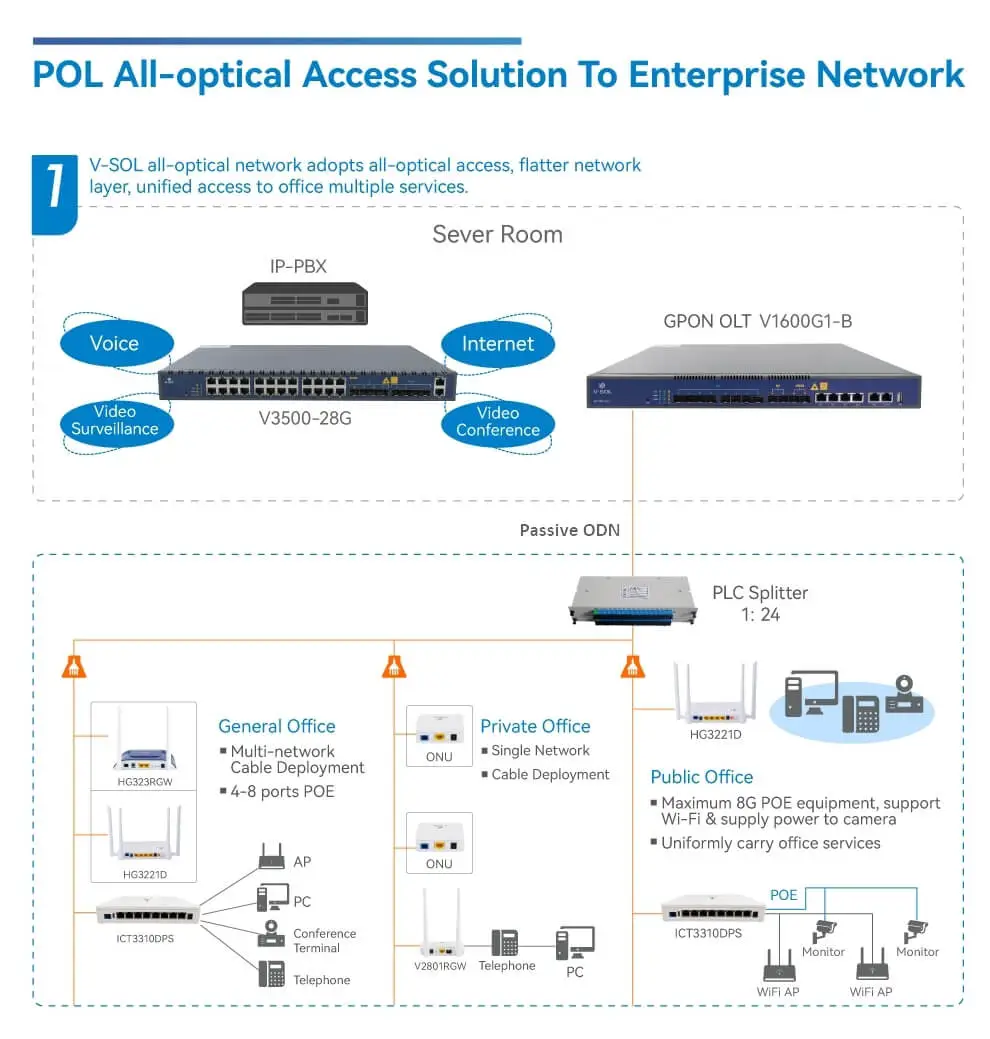The wired access technology develops from digital subscribe line (xDSL) to optical access (PON, Ethernet Optical Access) now. Optical access is occupying the market of broadband access. Why? What’s the difference between ADSL, VDSL and fiber optic Internet? In this article, let’s explore xDSL and optical fiber access networks together!
Part I. What is ADSL, VDSL, and Fiber Optic Internet?
1. ADSL
ADSL refers to the Asymmetric Digital Subscriber Line. It’s still a common type of broadband access, which works via standard cabling. The speed of ADSL is not reliable enough, which depends on the house. ADSL provides asymmetric transmission bandwidth of upstream and downstream. The data signal and telephone audio signal are modulated in their own frequency bands according to the principle of frequency division multiplexing. Therefore, it enables you to make or receive calls while surfing the Internet, avoiding the trouble of not being able to use the phone when dialing up the Internet. Besides, each node handles and exchanges information by adopting switch, making info transmission fast and safe.
2. VDSL
VDSL means Very-high-bit-rate Digital Subscriber Loop. It’s a new broadband access method upgrading from ADSL. The speed of upload and download is extremely fast, which empowers users with looking through webpage and download videos quickly. However, it can only function in short-distance data transmission. The core network uses optical fiber to transmit, enjoying a bandwidth of 10Mbps together with reliable and secure data transmission.
3. Fiber optic Internet (UFB)
Fiber optic Internet, also called Ultra-Fast Bandwidth (UFB), is the fastest and most expensive. method of accessing the network. The optical fiber transmits signals via optical instead of electricity so it supports faster speed with longer distance. Besides, optical fiber delivers and receives plenty of data at a higher speed than traditional cabling without the interference of wire or damage from the environment. In addition, according to the different positions of ONU, the access methods of optical fiber can be divided into FTTB, FTTH, FTTO, FTTP, etc.

Part II. ADSL vs VDSL vs Fiber Optic, what’s the difference?
1. Speed
VDSL can provide an upload speed of 10Mbps and a download speed of 70Mbps. The maximum download speed of ADSL reaches 24Mbps, but the upload speed is largely lower than that of VDSL. As for fiber optic Internet, although the theoretical download speed can reach up to 1Gbps, the actual speed is 300Mbps.
2. Application
ADSL is used for the general surfing of common users and enterprises. With VDSL, you can fluently use applications with high bandwidth such as Skype, YouTube, or online backup. The fiber optic Internet can fulfill users’ demands for all kinds of services. Besides VoIP and IPTV, high-speed computer communication, online learning, and HD live streaming can be achieved.
3. Availability
Compared with VDSL, ADSL is easy to use and used widely. Most ISPs around the world provide this service. However, with the development of technology and the increase of users’ requirements for networks and different services, more and more ISPs are deploying optical fiber.
4. Cost
The cost difference between ADSL and VDSL is not too huge. But the cost of fiber optic Internet is much higher than the other two ways. In particular, the closer the optical node is to the user, the higher the cost of access equipment shared by each one.
5. Signal loss
In comparison to ADSL, the signal loss of VDSL is much faster. Optical fiber loses 30% of the signal whereas DSL loses 94% at the same distance.
Part III. Related Access Network Solution
The below frame demonstrates the V-SOL Passive Optical LAN (POL) solution to enterprise networks. It’s a typical application of fiber optic access networks. POL is a new type of networking method based on PON technology, which adopts all optical fiber access to achieve an integration of multiple services and improves operation efficiency and user network experience. The passive optical network consists of OLT, ODN, and ONU. For more information about the solution, please refer to our detailed introduction about Passive Optical LAN.

Conclusion
Through the above comparison, we can know that fiber optic fiber has higher performance than others. Not only can it meet users’ requirements of various services, but also it’s capable of overcoming some limitations that DSL can’t get over. Optical fibers are protected from electromagnetic interference, promising the transmission quality of signals. The performance of the fiber access network is improving and the cost is dropping down. But the price of cabling is rising. Moreover, fiber optic Internet especially PON can be applied in many fields with complete monitoring and management system. There is great potential and fiber optic access networks will benefit the development of IoT.